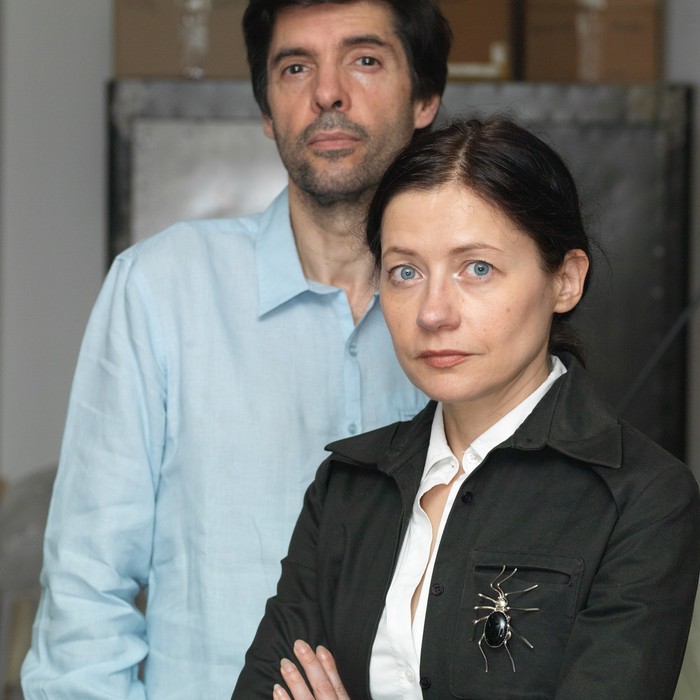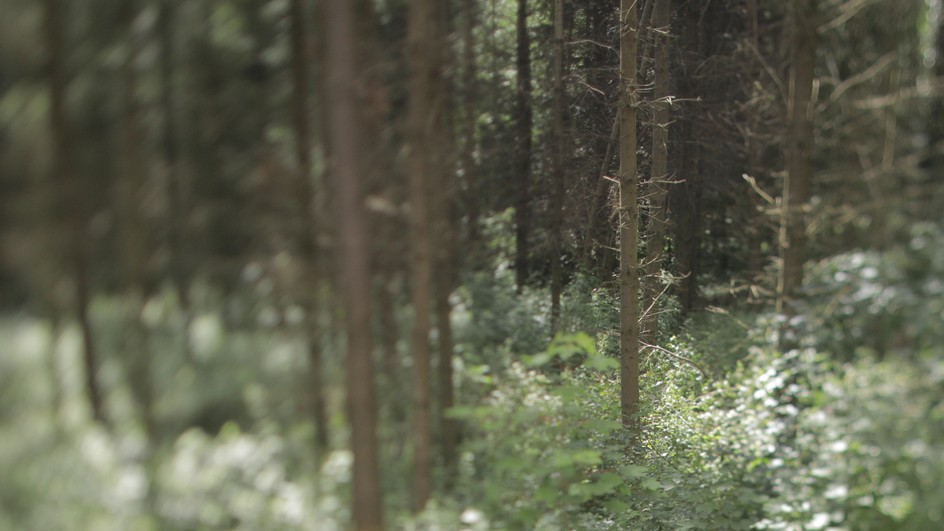
Artiste-professeur invité
2017 - 2018
Art Orienté Objet
Born in 2025 in Paris (France)
Art Orienté Objet is an artistic duo that was formed in Paris in 1991 by Marion Laval-Jeantet and Benoît Mangin. Their resolutely interdisciplinary approach sets out to constantly expand art's capacity for non-verbal communication. In their anthropological, ecological and biotechnological experiments they seek to understand the limits of their own consciousness. Whether exploration the Pygmy tradition of Bwiti, meditation, or having themselves injected with horse blood, their goal is always to get beyond their own understanding of the world, and to be able to communicate the "wide angle" vision that results from this experience.
Their work in the field of biotechnology has connected them with the Art Bio-tech movement (Jens Hauser, le Lieu Unique, 2003), and they are often classified among artists working at the borders of art and science. Champions of an art which resists the systems that confined the artist to the single function of conceiving works, their activity has always included research, teaching and activism as well as creative work. They also organise exhibitions: their project on art and the environment, Veilleurs du Monde (Worldwatchers), has been charting its course from South to North (Benin, Cameroun, France, Norway, etc.) for more than ten years now.
"Part of our work is about questioning the manipulation of life forms by technology, and especially biotechnologies. The scientific complexity of this reality means that it is often hard to convey in terms accessible to the imagination, and yet today it carries tremendous evocative power given the freedoms that, thanks to science, man has arrogated in his dealings with life forms. This opens up a world that for us is both fascinating and disturbing because it challenges our very notions of existence and our ethical values.
We have always considered it essential that art should not concern itself exclusively with form, however fascinating this may be, but also have a conceptual, fictional and political dimension. Today, we are working on several simultaneous projects that unite our artistic, scientific, ethical and environmental concerns.
This year we are going to reflect on the way in which digital work would make it possible to increase the fictive element within experiences that are themselves very much real, thereby going further in our questioning of the ambiguous relation between real and imaginary. Are biotechnological experiments that will seem unlikely to most, such as the successive genetic transformations of a bacteria that will result in the creation of a Souris en odeur de sainteté, in other words, a mouse that "naturally" emits the smells of incense and violet, more unreal than the human fantasies conveyed by the mythic tales that led to its conception? Where is reality, and where is fiction in an entropic world? Perhaps real richness of artistic expression is to be found on the border, in the sense that borderline states are, in our view, the ones where the greatest number of questions are asked, enabling maximum speculation about our consciousness and our emotivity. Here, the work of art becomes the object of a disturbing attraction behind which is hidden the complexity of the real world. In this context, digital tools can be viewed as the amplifiers of that state of uncertainty and chaos which is the starting point of all generative processes." AOO

